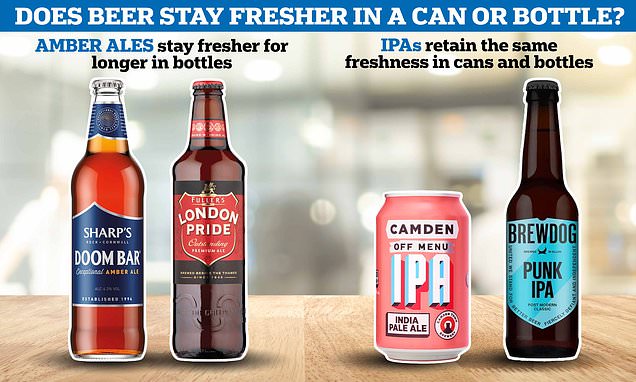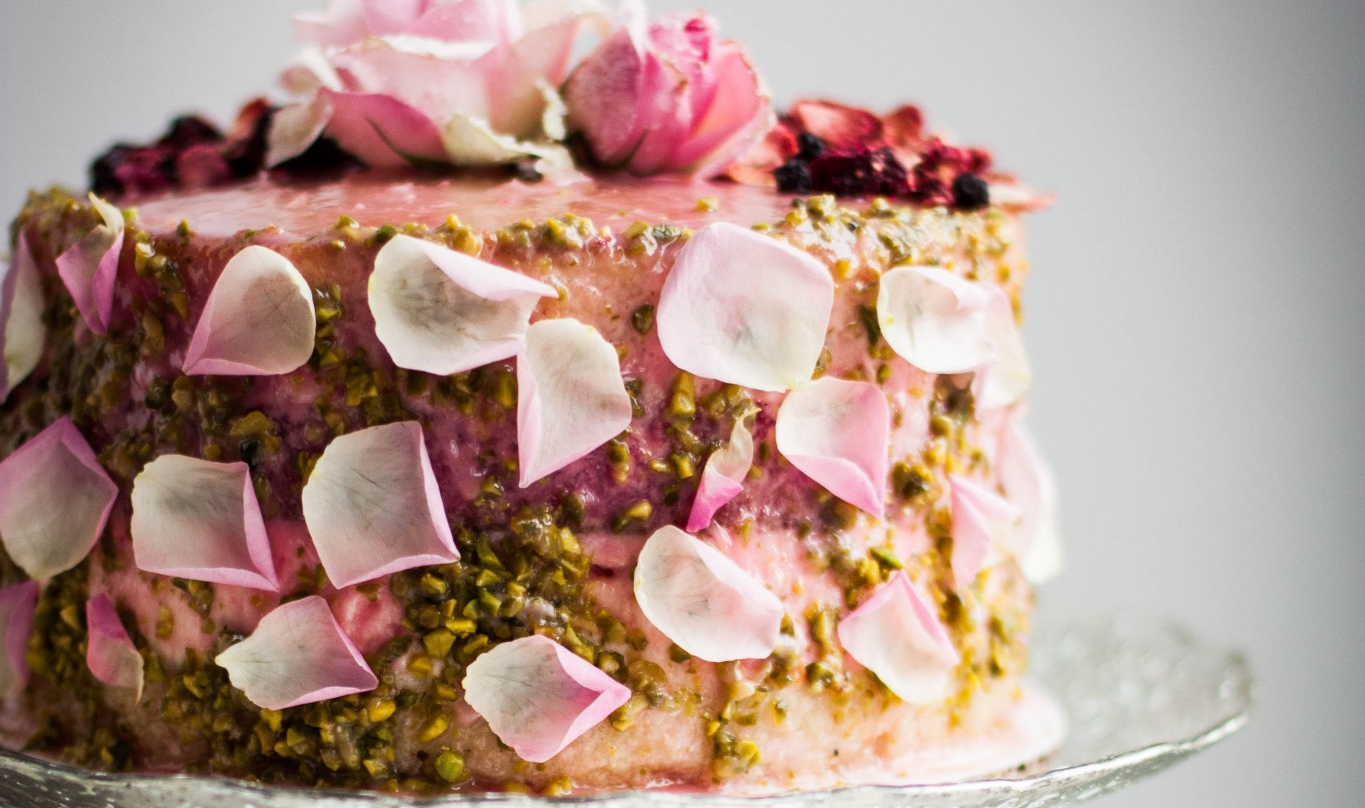Scientists at Colorado State University have conducted research into how beer vessels can affect the ageing process of amber ales and IPAs. They found that amber ales retain their flavour for longer in a bottle than in a can, while for IPAs, the vessel in which they are stored does not make a difference to their freshness. The level of certain amino acids and esters was lower in cans of amber ale than in bottles. The study revealed that bottles undergo air evacuation via vacuum, which means oxidation reactions don’t occur as much, and that the same can be said for only the polymer seal of the bottle, which doesn’t have the same contact with the beer, so keeps the ale fresher for longer. This is thought to be because IPAs have a higher concentration of a type of alcohol molecule called a ‘polyphenol’, which comes from hops. These help prevent oxidation reactions upon contact with air and also help bind flavoursome amino acids, preventing them from being lost to the packaging. The authors of the study concluded that the effects of package type are dependent on beer style. Therefore, brewers should consider the results of this study to make scientifically backed packaging decisions and shelf life determinations.
Scientists Settle the Debate on Which Vessels Keep Beer Freshest
Researchers at Colorado State University conducted an experiment to determine the vessel that is best at keeping beer fresh. Over a six-month period, scientists opened bottles and cans of different ales every two weeks and analyzed their contents for the tasty compounds that remained.
The study showed that amber ales, such as Doom Bar and London Pride, retain their flavor for longer in a bottle than in a can. However, for an Indian pale ale (IPA), such as Brewdog Punk IPA, the vessel it is stored in does not make a difference to its freshness.
The researchers hope that the results will help brewers make better packaging decisions. The study demonstrated that beer metabolites, and thus stability, are significantly impacted by package type.
The two containers used in the experiment, bottles, and cans, are fundamentally different in material and air contact. Cans are made from aluminum, and their interior is coated with a polymer to protect the drink from gaining a metallic taste and the metal from corrosion. The opaque metal also protects the drink from UV light, which can cause reactions that result in an unpleasant aroma.
Glass bottles, on the other hand, allow at least some UV light to penetrate, and the seal on the caps allows air to permeate in. However, the bottles also undergo air evacuation via vacuum, as they are made of a strong material that can withstand the force, so the beer inside is less likely to oxidize.
Cans, on the other hand, have an airtight seal, but before the lid is fitted during the manufacturing process, they let in a lot of oxygen.
In addition to water and ethanol, different beers contain various chemical compounds that give them their unique flavor. The researchers found that the proportion of chemical types in each beer type and container showed significant changes in abundance over the six-month experiment.
In conclusion, the study found that amber ales stay fresher in a bottle, while IPAs are less sensitive to container type. The study highlights the significance of package type and how it can impact the stability of beer metabolites. Brewers can use this information to make better decisions about packaging and preserving the quality of their product.
Study Reveals How the Vessel Can Impact Beer’s Flavour and Ageing Process
Researchers at Colorado State University wanted to look at how different beer containers can affect the chemical changes that occur during the ageing process of amber ales and Indian pale ales (IPAs). The study, published in ACS Food Science & Technology, replicated the typical storage conditions of the two beer types and analysed the contents of bottles and cans for 17 key chemical compounds.
Beer metabolites are small organic molecules produced by the yeast, hops, and other ingredients inside the liquid. These metabolites are more volatile and reactive, and can easily break down during the beer’s storage, resulting in less flavour. The components formed during this process can also generate new, unappetizing compounds that contribute to the beer tasting old.
The study revealed that amber ales retain their flavour for longer in a bottle than a can. On the other hand, for an IPA, the vessel it is stored in does not make a difference to its freshness. The concentrations of metabolites differed dramatically in the amber ale depending on whether it was stored in a can or a bottle. The level of certain amino acids and esters was lower in the can of amber ale than the bottle at the very first sample.
Bottles of beer undergo air evacuation via vacuum, as they are made of a strong material that can withstand the force, so the beer inside is less likely to oxidize. Cans, on the other hand, do have an airtight seal, but before they are fitted with a lid during the manufacturing process they let in a lot of oxygen.
The popularity of beer cans has increased in recent years, with 80% of craft ale drinkers preferring cans in 2020, compared to 20% in 2015. This shift can be attributed to the recent availability of small canning lines, shifts in consumer activity, and supply chain challenges resulting from the COVID-19 pandemic.
In conclusion, this study demonstrates that the vessel a beer is stored in can impact its flavour and ageing process. Brewers can use this information to make better packaging decisions and preserve the quality of their product.
How Beer Vessel Impacts Flavour and Ageing Process
Beer lovers are always searching for the perfect pint, and scientists at Colorado State University have conducted research into how beer vessels can affect the ageing process of amber ales and IPAs. The study, published in ACS Food Science & Technology, found that the container in which beer is stored can have a significant impact on the beer’s flavour and ageing process.
Beer metabolites are small organic molecules that are produced by yeast, hops, and other ingredients in beer. These metabolites are volatile and reactive, which means they can easily break down during the ageing process, resulting in less flavour. Previous research had mainly focused on light lagers and a small number of chemicals involved, but this study looked at more trendy beer types, including amber ales and IPAs.
Bottle vs Can
The researchers found that amber ales retain their flavour for longer in a bottle than in a can, while for IPAs, the vessel in which they are stored does not make a difference to their freshness. The level of certain amino acids and esters was lower in cans of amber ale than in bottles.
Bottles undergo air evacuation via vacuum, which means oxidation reactions don’t occur as much. However, some differences in the abundance of hop terpenes were noted between bottles and cans of amber ale, but these were to different extents. Hop terpenes are known to undergo ‘flavour scalping’, where they seep into the drink’s packaging over time. The entire polymer lining of a can’s interior allows for this process to occur, which has a large surface area in contact with the liquid at any one time.
The same can be said for only the polymer seal of the bottle, which doesn’t have the same contact with the beer, so keeps the ale fresher for longer. While some of these differences were also noted between bottles and cans of IPA, they were much less extreme.
The Impact of Polyphenols
This is thought to be because IPAs have a higher concentration of a type of alcohol molecule called a ‘polyphenol’, which comes from hops. These help prevent oxidation reactions upon contact with air and also help bind flavoursome amino acids, preventing them from being lost to the packaging.
The authors of the study concluded that the effects of package type are dependent on beer style. Therefore, brewers should consider the results of this study to make scientifically backed packaging decisions and shelf life determinations.
In conclusion, beer lovers can now make better-informed decisions when it comes to their choice of vessel for amber ales and IPAs, with bottles being a better option for amber ales and cans and bottles being suitable for IPAs.
Don’t miss interesting posts on Famousbio










